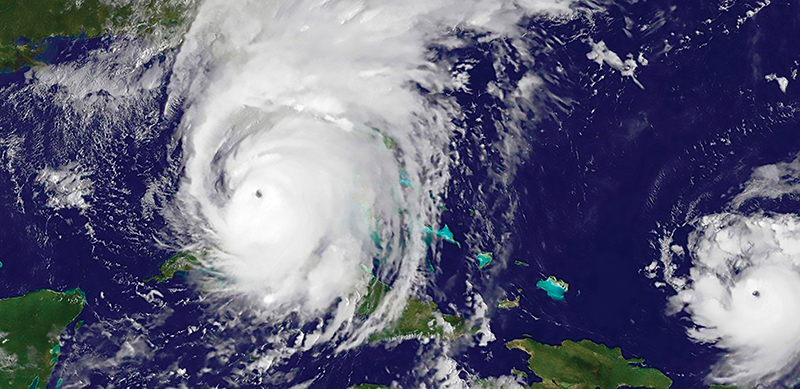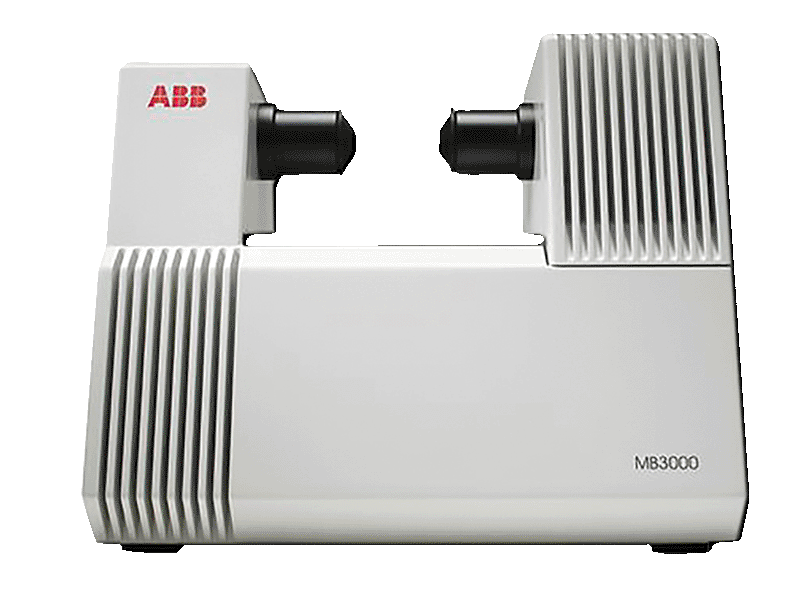
Laser Enables Precise Measurements for Weather Forecasting, Industry
NASA Technology
News of Hurricane Irma dominated forecasts for days before it made landfall in the Caribbean and then the southeastern United States in September 2017, with predictions of where it would hit, when, and just how powerful it was going to be. And although the massive storm devastated many areas, those forecasts helped countless residents prepare to weather it more safely.
But how did forecasters get such a clear picture of what was coming? One important tool in their arsenal was a sophisticated device called the Cross-Track Infrared Spectrometer (CrIS), which scans the atmosphere, from the ground all the way up, from a polar-orbiting satellite.
After the fact, recalls David Johnson, a scientist at Langley Research Center, analysis showed that prediction models without readings from satellite instruments such as CrIS showed the storm sputtering out in the Atlantic Ocean soon after forming. “But when they include the data from these sounders,” he says, referring to CrIS, “the models showed the hurricane intensifying and becoming a major storm”—which is what actually happened. (In fact, it was one of the strongest storms ever measured in the Atlantic basin, and even after it weakened to a tropical storm over land, its slow-moving path and large wind field left a huge swath of destruction.)
“The improved temperature and humidity information from CrIS improves the ability to predict tropical cyclone intensification as well as improve your storm tracks,” giving more accurate information three to five days beforehand, Johnson says—crucial for emergency planning.
Building CrIS was no easy task—and one of the lasers needed to make it work has since gone on to help in everything from oil refineries to milk production.
CrIS is what’s called a Fourier Transform spectrometer. Put simply, spectrometers observe a solid, liquid, or gas, and then measure which spectra of the light are emitted or absorbed. From that, they are able to determine information about the composition of that substance. In this case, CrIS measures temperature and humidity by observing thermal emissions—that is infrared light—from the Earth’s surface that are absorbed and reemitted by the atmosphere.
To get the spectral measurements, the infrared emissions are first split and bounced between two mirrors—one of which moves at specific intervals to control which wavelengths of light are reflected—before being sent to a detector. This process is repeated many times as the second mirror moves, alternately blocking and allowing different wavelengths to pass through. After all that, the data must be analyzed using complex mathematical models (specifically, the Fourier Transform) to get the targeted answer.
But if the mirrors aren’t aligned absolutely perfectly, and the distance the mirror moves isn’t calibrated precisely, to submicrometer levels, the entire process breaks down.
This is achieved with a metrology laser—in other words, a laser measurement—that constantly checks the alignment and distance of the mirrors, telling the spectrometer exactly when the distance is correct to take a reading and ensuring that reading isn’t filled with noise.
“CrIS wouldn’t work without a laser metrology system,” Johnson emphasizes.
Technology Transfer
The metrology laser for CrIS was built by a multinational company called ABB, based in Switzerland but with its U.S headquarters in Cary, North Carolina, as a subcontractor to L3Harris Technologies. ABB had been building metrology lasers for spectrometers at least since the 1990s, explains Marc-Andre Soucy, ABB’s director for space and defense systems. But CrIS needed something different.
“On industrial systems, we used to use a helium-neon laser. Essentially, that’s a tube with gas inside, and by applying a high voltage, it creates a laser signal,” Soucy says. But that wouldn’t work in space for a variety of reasons. For one, in the vacuum of space, it is difficult to contain the helium. For another, the lifespan of these lasers is only about three to four years—far too short for a satellite expected to last 10 to 15 years.
So ABB needed to find a laser that would be reliable and long-lasting and would work in space. They needed it not just for CrIS but for a concurrent project with the same problem with the Canadian Space Agency.
The solution was a semiconductor laser. These weren’t new—among other applications, they had previously been used for telecommunications—and they offered a number of advantages over helium-neon lasers. They are smaller, both in physical size and power requirements, they have a much longer lifespan, often up to 25 years, and they are very reliable.
However, there were a number of challenges that had to be overcome to make them work for space-based spectrometers. The most important was that, unlike helium-neon lasers, which have a constant wavelength based on the atomic properties of the helium-neon gas, semiconductor lasers have a variable wavelength that depends on the temperature and the current flowing through them. But for the sub-micrometer accuracy needed in a spectrometer, the wavelength needed to be held absolutely constant.
“It took us some time to find ways to get similar levels of performance to the helium-neon lasers,” says Soucy, “but today the results are very good. Probably not as good as helium-neon lasers, but it is sufficiently good so that it does not limit the performance of our spectrometers.”
It was good enough for CrIS, which launched in 2011 and has been improving weather forecasts ever since, as well as for the Fourier Transform spectrometer on the Canadian satellite. In fact, ABB has a half-dozen of these metrology lasers flying on satellites currently, and, notes Eric Beaubien, CrIS program manager at L3Harris Technologies, his company is already working on the next-generation model with ABB components.
“Before the L3Harris-built CrIS became operational, sounders provided 19 ‘slices’ of the atmospheric column from the ground up through the clouds. The next-generation CrIS captures more than 2,000 slices, vastly improving weather forecast models with more detailed information about moisture, temperature, and pressure.”
And plenty of ABB’s Earth-based clients have also jumped on board.
Benefits
ABB had already sold thousands of industrial spectrometers with helium-neon lasers before developing the semiconductor-based version. Some of those customers have chosen to stick with what they know, Soucy says.
Most, however, have not. “I would say now about 90 percent of our industrial spectrometers are using the semiconductor laser like the space ones,” he says. “We deliver more than 1,000 systems every year now.”
Moreover, he notes, since adding the semiconductor laser to their catalog, “we have more than doubled our business volume. It’s not only due to that, but we can say for sure this has resulted in higher sales.”
The benefits for industrial customers are largely the same as for space: the lasers deliver extreme accuracy in a smaller, less power-hungry, longer-lasting package. For example, ABB spectrometers are used in oil refineries to measure octane and other chemical parameters in real time. Every time the metrology laser needs to be switched out, oil production must come to a halt, costing the refinery money.
“For those customers, having less maintenance or as few interruptions as possible is very important. Because for them it means higher yield or higher production,” Soucy says.
ABB’s spectrometers are also used in the dairy industry, to measure fat content of the milk so it can be accurately labeled as skim, 1 percent, 2 percent, or whole milk. Other customers are in the pharmaceutical industry, environmental sector, and even in semiconductor production.
So whether you’re checking your five-day forecast, buying whole milk, or filling up with high-octane gas, there is a small but powerful laser playing a crucial role.

One essential component of CrIS is a metrology laser designed by ABB. The company has since incorporated the smaller and longer-lasting laser into many of its commercial spectrometers, used for quality control in the pharmaceutical industry and to measure octane in oil and gas refineries, among many other applications.

Hurricane Irma was massive on September 10, 2017 as it approached Florida—seen here in a NASA satellite image. (Hurricane Jose can be seen in the lower right corner.) The Cross-Track Infrared Spectrometer (CrIS) on a different satellite helped predict the hurricane’s path and intensity, enabling communities to better prepare for the storm.













